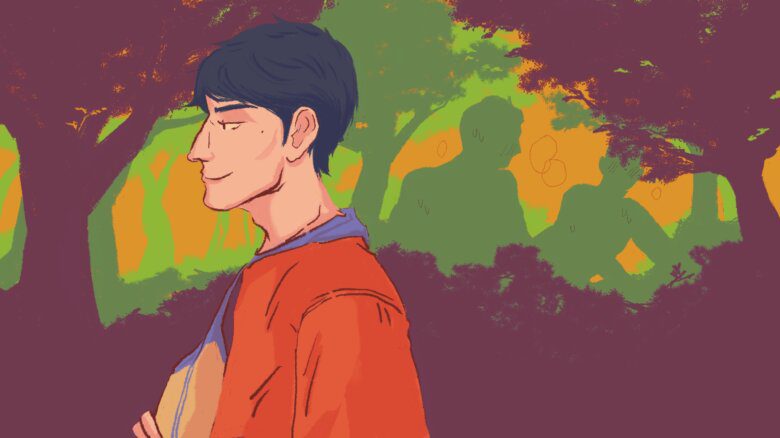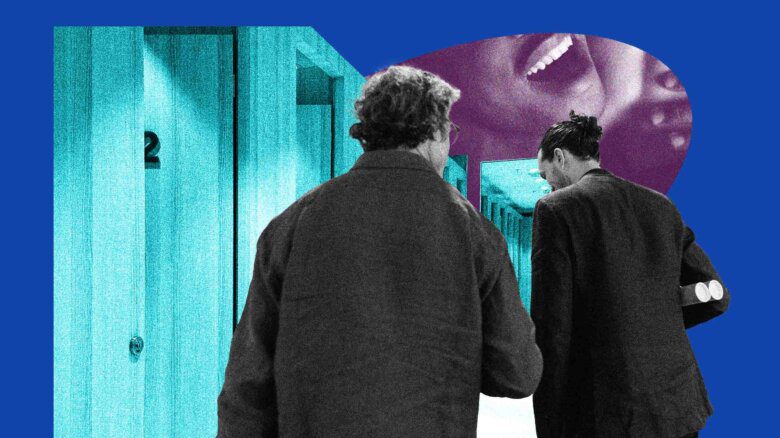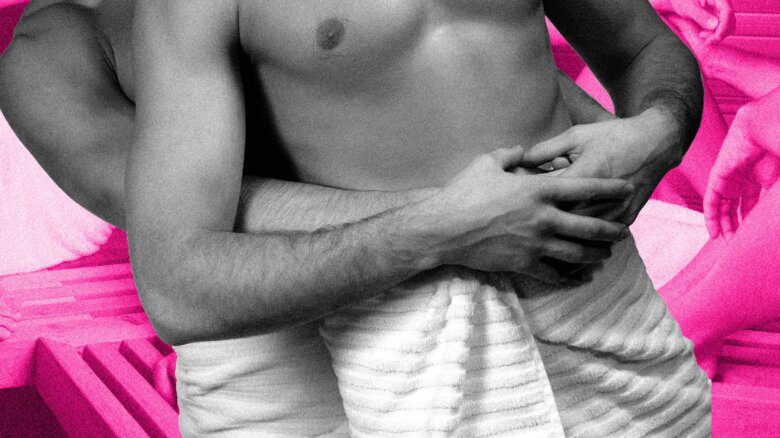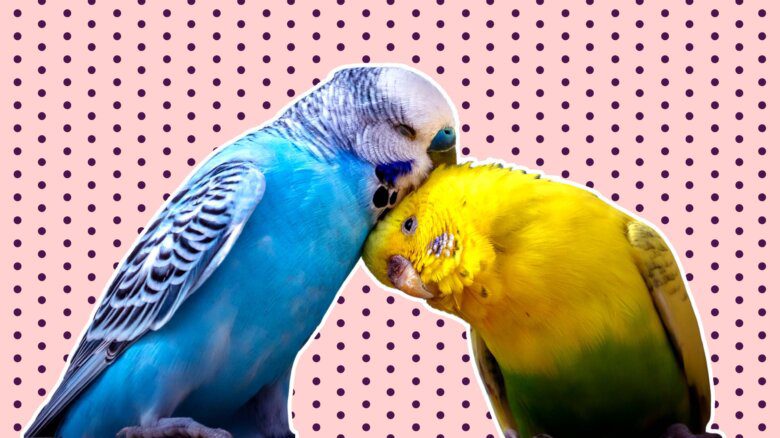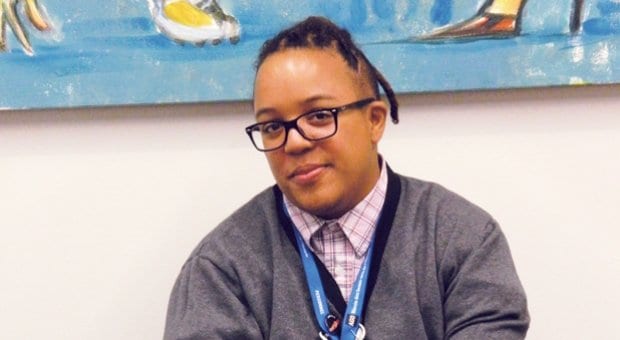
Toronto activist Syrus Marcus Ware says that when attending community events, he often feels he has to check his disabilities at the door. Credit: Daniela Costa
In the still we see Loree Erickson in her wheelchair, her dress pulled down to expose hard nipples and her head thrown back as co-star Sam slides a gloved hand between her thighs.
The film, want, was Erickson and Sam’s first time making porn. They were nervous, they fumbled, but what they’ve made is real and sexy, and it’s getting us to rethink who’s desirable.
At the film’s premiere, one director said it was so hot, Erickson’s wheelchair just faded away. But the wheelchair is the point.
“That’s not part of my vision,” Erickson says, “that you have to make any visible marker of my disability disappear so that you can see me as sexy.”
Though she’s happy with the film and the overall response it’s received, Erickson is clear that want was born of frustration. She’s daily made to feel non-sexual. When she goes out, people compliment her outfits, but she says no one picks her up. In queer porn, bodies like hers aren’t shown. “It’s still skinny, white, hipster queers with tattoos.”
Despite some improvement in recent years, with a wider range of bodies represented, Erickson finds casts are still fairly homogeneous.
Andrew Morrison-Gurza, a master’s student researching public perceptions of disability and the law, has felt similarly excluded. “I don’t fit because I’m not walking, I don’t have a six-pack, I’m not six foot two, and I don’t have an eight-inch dick,” he says, “so all of those things together mean that I don’t fit this very structured stereotype of what gay men are apparently looking for.”
Though he’s remarkably free of cynicism, Morrison-Gurza describes the gay men’s community, with its “body beautiful” culture, as especially wary of disability and says his sexuality often makes people uncomfortable or perplexes them. Some assume he’s a virgin or that he has no feeling in his legs. Others are thrown when he cracks dirty jokes — something he particularly delights in.
Homophobia and transphobia can, of course, further suppress sexuality. In the context of healthcare and home care, this is especially disastrous. In Bent, a now-defunct online magazine by and for queer disabled men, Randy Warren describes an unfortunate incident with his caregiver, Todd. He’d been travelling for business, and one night after going to sleep he woke up to a tongue in his ear. He hadn’t told the caregiver he was gay, and Todd, assuming he was lonely, decided to surprise him with a visit from a sex worker. It seriously misfired. Not only had Todd failed to get Warren’s consent, he’d hired a woman.
John Killacky, who had a spinal cord tumour removed 17 years ago, remembers the clumsy handling of his sexuality by hospital staff. Initially paralyzed from the neck down, he’d asked his hospital psychologist about sex. She told him that since she wasn’t gay, she couldn’t advise him. Other staff offered Killacky and his boyfriend a video depicting sex between an able-bodied woman and a man with quadriplegia. Killacky and his partner didn’t mind that there were no gay materials but felt the video was condescending and unrealistic.
“The woman … picks the guy up, puts him in the bed like he’s a little baby doll, gingerly gets in bed next to him, and rolls him on top of her. And my heart broke,” Killacky says. He points out that the man would not have been able to feel insertion, much less thrust, and was stunned by the video’s insistence on man-on-top sex.
Like Erickson, writer and performer Leah Lakshmi Piepzna-Samarasinha offers more appealing models of sex and disability. Two years ago, she collaborated with Ellery Russian on Crip Sex Moments, a suite of performances drawing on their own experiences, like the first time Piepzna-Samarasinha had a lover with the same chronic illness as her and the way this lover seduced her with gluten-free brunches and cane foreplay.
Crip Sex Moments is just one of several pieces she’s created for Sins Invalid, a project centring on performances by trans and queer people of colour with disabilities.
“It’s really common for me to get a reaction from people who go, ‘Wow, there’s enough material around that for an entire show?’” But Sins Invalid isn’t an arbitrary alliance of marginalized identities — and Piepzna-Samarasinha explains that for her, the emphasis on race is especially significant.
“It’s impossible for me to talk about chronic illness without talking about environmental racism” — what she says is the disproportionate exposure of people of colour and low-income communities to polluted and otherwise degraded environments. In her first Sins Invalid performance, Piepzna-Samarasinha describes growing up in a rustbelt town in Massachusetts, what it felt like being at school, overpowered by the smell wafting down from the abrasives plant, and how each year another teacher developed alopecia or cancer.
And yet, the mainstream disability rights movement has been predominantly white.
“I came to disability studies with the hope that I was coming home,” says Syrus Marcus Ware, a local artist, researcher and educator. As a queer, black, trans man and identical twin with disabilities, Ware had sought a place that embraced all facets of his identity but found the presumption of whiteness to be pervasive. In other spaces, he often feels he has to check his disabilities at the door.
“When I go to a black queer meeting, I’m only talking about that issue,” he says, noting he feels he can’t question why the meeting’s on the fourth floor and there’s no elevator.
In his art he explores how his full identity comes together, referencing Audre Lorde, who wrote, “My fullest concentration of energy is available to me only when I integrate all the parts of who I am.”
In 2005, Ontario enacted the Accessibility for Ontarians with Disabilities Act (AODA), intended to accomplish what preceding legislation could not: a barrier-free Ontario. New standards are rolling out in stages, with an end date of Jan 1, 2025, and in its annual reports, the province describes progress on customer service, employment and transportation. But it’s unclear when critical AODA components, like accessible building standards, will come into effect, and on-the-ground change is slow.
“If we wait until 2025 to literally get in the door to our doctors or our schools or our apartments, some of us won’t be here,” Ware says.
In his thesis proposal, Morrison-Gurza argues that legislation can bring true accessibility only if we shift cultural attitudes, particularly the idea that disability is a deficiency existing within an individual, something that person must overcome to navigate the world, rather than a social problem.
In fact, disability affects a growing number of us — currently one in seven Canadians — and more as our population ages. Most of us need support of some kind to live and fully participate in society: glasses to see, inhalers to breathe, painkillers for our backs and so on. But we don’t necessarily identify with the term “disability” or anticipate future needs, making it easier to ignore accessibility issues.
Being sexual and desired should never be a prerequisite for access, but it can be. Consider this: if your crush couldn’t get past the stairs to your party, you’d choose an accessible venue. If they got migraines from perfumes, you’d ask invitees not to wear them. Collectively, our crushes could be a powerful force for change.
Conversely, when our bathhouses and parties don’t have ramps or American Sign Language (ASL) interpretation, we’re not just failing to consider access, we’re making implicit statements about who’s sexy, Ware says. “What we’re saying is, we don’t anticipate or imagine anyone from deaf communities and/or people from disability communities … to be a desirable person, because if we did we would make sure that they could come to the party.”
Queer feminist circles tend to be ahead of the curve when it comes to these issues, but even within this community, Erickson finds that theory often doesn’t translate into practice. Party organizers will post mission statements outlining inclusive, anti-oppressive values but then pick venues like Club120 because it’s sex-positive, ignoring the fact that some invitees can’t get past the stairs.
And when events promise accessibility, they often neglect critical details. A venue might have a ramp at the entrance, for example, but washrooms located in the basement, or ASL interpretation might be provided but with lighting too dim to properly see.
That’s not to say efforts aren’t being made. In 2011, Luke Anderson and Michael Hopkins started up StopGap, a volunteer-driven project that builds small wooden ramps for businesses. More than 100 businesses across Toronto, and as far as Cranbrook, BC, have participated. Anderson, who uses a wheelchair, explains that he and Hopkins were inspired by their own workplace, where every day for six years they had to deploy a temporary folder ramp so that Anderson could enter.
He admits that StopGap’s solution is temporary and imperfect, but it spurs conversation, cuts through the municipal red tape required for permanent ramps, and it’s better than waiting for 2025.
And people with disabilities are not the only ones to benefit — some business owners have reported an increase in customers as more people get through their doors, including parents with strollers.
Other affordable solutions exist. “People with disabilities are actually really smart at figuring out how to do access on no money,” says Piepzna-Samarasinha. “Oppressed people know best how to create a space that works for us, so you just need to ask.”
But first, we need to want it — and a little pressure always helps. To that end, Elisha Lim (who prefers the gender-neutral pronoun they) started up a pledge to skip parties that aren’t wheelchair accessible: “Why would I come to a party if my friends are barred?” they ask.
Their Facebook event page includes a list of venue recommendations, including detailed accessibility information. At last count, 281 people had signed up, and though momentum has slowed, more continue to join. With broader participation, initiatives like these could help ensure that more people are able to enter and navigate queer spaces.
Since its premiere in 2006, Erickson’s want has racked up awards and generated tremendous enthusiasm from audiences. Even her mother is now on board.
“It took her a while. She had to get there, but she’s like, ‘So you’re a pornstar. Well, I’m proud of you.”’
And Erickson’s just getting started. She recently wrapped up shoots for some new films, and as part of her PhD dissertation, she’s enabling others with disabilities to make porn, then interviewing participants about how the process transforms their ideas of bodies and “fosters resilience against cultures of undesirability.”
At its core, accessibility ensures everyone can participate in our community. Films like Erickson’s go a step beyond, working to make those with disabilities feel not only welcome, but truly wanted.
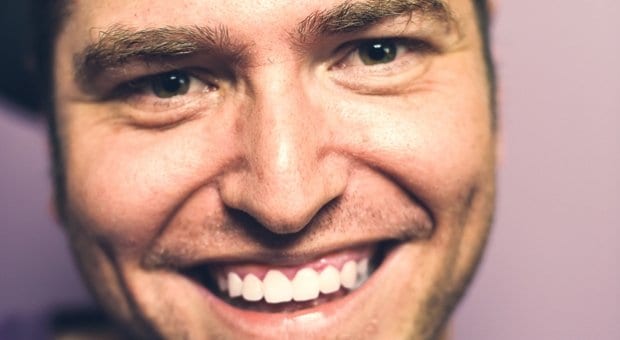
 Why you can trust Xtra
Why you can trust Xtra